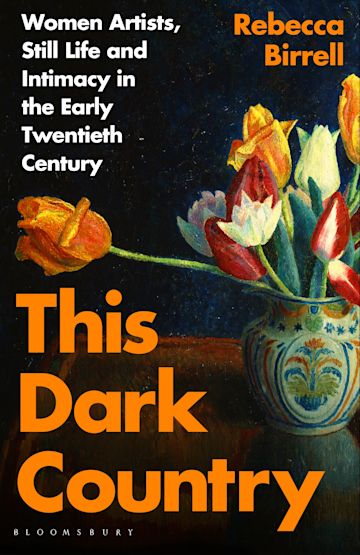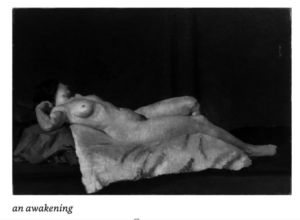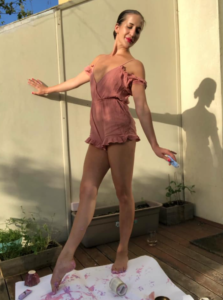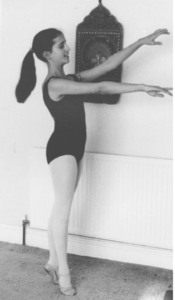 Reviewed by Leila Lois
Reviewed by Leila Lois
This Dark Country: Women Artists, Still Life and Intimacy in Early C20
by Rebecca Birrell
Bloomsbury
30 Nov 2021, 384 pages, Hardback, ISBN: 9781526604019, $42.50
Floral obsessions, nude dancing in the garden and Sapphic desire, Rebecca Birrell’s This Dark Country: Women Artists, Still Life & Intimacy in Early Twentieth Century, is just exactly the type of energetic exegesis art history needs right now. As Birrell writes, ‘This is not a standard group biography as the writing of queer lives demands a queer form’, there is nothing standard nor presumptuous about this book, it lives with both deep connection and observation of the extraordinary group of female artists and their art and celebrates the pandemonium of their lives, fervently lived together. As a diverse femme (bisexual) artist I appreciate inordinately Birrell’s documentation of this wildly interesting group of women, their dreams, desires and stories.
Flourishing with furtive letters and diaries of the Bloomsbury group women (revealing love & jealousy, domesticities & desire), sprinkled with photographs & paintings, this book transported me. It’s a rarity to enjoy reading a shopping list, but a very good sign. Vanessa Bell’s, included in the first chapter, is an indulgent and zesty medley: ‘stout, oysters, salt, lemon, orange…’ setting the scene for the sensorial joy of Rebecca Birrell’s speculative prose about these remarkable women’s inner lives as they co-created their worlds. Here is an extract of one such passage on Dora Carrington’s painting, An Awakening:

Carrington’s earliest known works are nudes completed in the period after she enrolled at the Slade in 1910. A woman is in the midst of an awakening: with sheets meticulously rumpled beneath her, she raises her arms as though stirring from sleep, and it is her skin that registers the transformation, moving through rose and yellow and milk, the colours of rising dough. Her cheekbone and shoulder and breast are echoes of each other, soft half-circles highlighted by a shivering white light, effects which lead the eye to her navel, the palette’s buttery centre, the warmest spot. Amongst all this beauty, touches of awkwardness: the blunt rendering of the one visible foot, the clumsy foreshortening of the arm held aloft; the thigh fixed at an uncomfortable angle, and her face turned from the viewer. Whatever emotional process we are witness to in this work, the feelings that drove Carrington as she painted it, these upsets in the execution and arrangement of the composition suggest that there is more anxiety to it than is at first revealed.
The gossipy letters between the femme artists and hearsay is depicted in an entertaining and lively light. Birrell has a way of making these archival finds come alight, living, breathing, dancing and whirling as she includes passages such as this one, describing the opining of Lady Ottoline Morrell upon meeting the infamous artist Dora Carrington (the former was an early twentieth century ‘It girl’, a socialite who some say was the inspiration for DH Lawrence’s Lady Chatterley):
‘She is attractive as a wild shaggy Exmoor pony is attractive.’
And indeed the wilderness and unfiltered tenacity for life of these femme artists is explored in the renowned photograph of Dora dancing nude in the gardens, complimented by a poetic description by Birrell:
Think of the often-reproduced photograph of Carrington as a living sculpture in Ottoline’s garden. Trees part to declare her presence, and the perspective positions the viewer as though crouched below, observing a minor god revealing herself to her mortal subjects. Hair grazing her cheekbones, a helmet of polished stone; underneath it her body stretched with balletic ease. There is nothing solid about her: she is lithe and moving and soft. You can feel the air prickling her skin, the strain in her muscles, the ache she would experience later.
As with reading the correspondence of letters between Virginia Woolf and her surreptitious lover, Vita-Sackville West, there is a sense of desperation and imminent rupture in this group of artists, a sense of longing and half-freedom as they battled the remnant social mores of the Victorian age and struggled with elitist patriarchy in the artistic spheres they frequented.
Birrell beautifully highlights however, that their co-creation of a space of permissiveness and celebration of femme beauty at the Charleston homestead created an enduring legacy of artistic living that was far from ‘Still Life’; moreover it was teeming with life, in all its blossoming, exuberant beauty and decay.
I adore this book, particularly as, growing up with a very creative single mother, I have intimate memories of spending one weekend where she, my brother and I painted all the bath panels, doors and cupboards of one of our houses with mermaids, nudes and still-lifes, inspired by the Charleston Homestead. I was enthralled from a young age with the worlds these femme artists created, their dreaminess and boldness to go against the grain of strict class, sexuality and gender expectations. In post-pandemic times where our interiors have been our entire realms for extended periods, we can hold this book close as an insight into a way of life in domesticity that celebrates the rich beauty, joy and even freedom of interior worlds.
 Left: Painting with my feet in the garden during the long lockdowns in Melbourne 2020-2021.
Left: Painting with my feet in the garden during the long lockdowns in Melbourne 2020-2021.

Right: A photo, taken by my mum circa 2012, dancing in the house of my childhood/teens that we decorated top to toe with paintings, murals and craft inspired by the Charleston Homestead.
About the reviewer: Leila Lois is a dancer and writer of Kurdish and Celtic heritage who has lived most of her life in Aotearoa. In her poems, Leila explores a personal sense of origin that, like the ocean, binds several landscapes and times, coming back to the idea that a timeless, boundless love pervades. Her publishing history includes Southerly Journal, Djed Press, NoD Literary Journal, Honey Lit Journal, Mayhem Journal, Lite Lit One, Bent Street Journal and Delving into Dance. Find out more at: www.leilaloisdances.com/writing or at Twitter: leilaboos